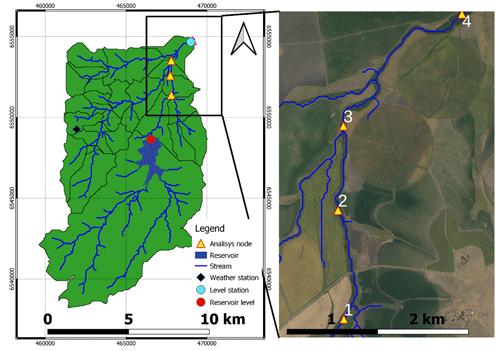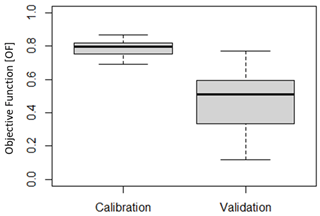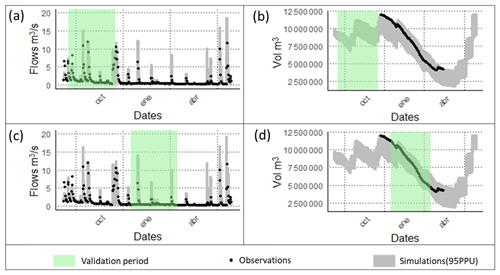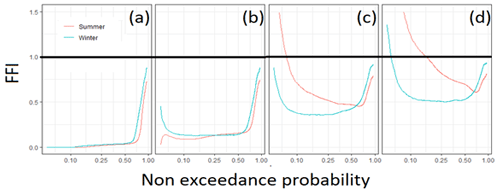Assessing impacts of irrigation on flows frequency downstream of an irrigated agricultural system by the SWAT model
There are multiple conflicts between agronomic uses and environmental conservation. Environmental flows must be respected on basins with human interventions. The water regulation of Uruguay establishes a value of environmental flow per month for watercourses. For each month, the value corresponds to a 60 % probability of excess of the daily flows. However, the return flow of irrigation systems is not considered by current national regulations. The objective of this work is to assess the effect of irrigation downstream of reservoirs of agricultural basins. For this purpose, surface and subsurface water flow generation, and interactions between atmosphere, plant, water, and soil are quantified with the SWAT model. The model was implemented for a small basin in the north of Uruguay (Tala catchment, 120 km2). The main crops are rice, soybeans, and corn, which are irrigated by pivots and border irrigation, where water is conducted by long dug channels. The water source is a reservoir with 1200 Hm3 capacity, which is constructed with an earth dam and placed over vertisols soils. Water volumes in the reservoir and flows at the outlet of the catchment were validated with a moving window. Once the model was calibrated, it was used to simulate 30 years of irrigated agriculture and compared with simulations without human intervention. Results show the effect of return flow on the quantity and frequency of water fluxes through the basin. Flow duration curves show that the magnitude of low flows increases downstream on the irrigated system. On the other hand, high flows are attenuated by the storage capacity of the reservoir. The outcomes of this work could support new policies and water regulations, as they show that changes in the frequency of flows are associated with irrigation operations.










